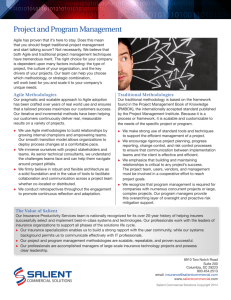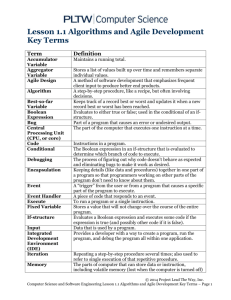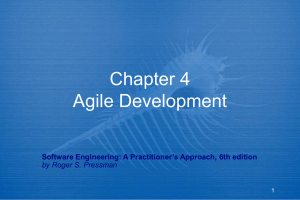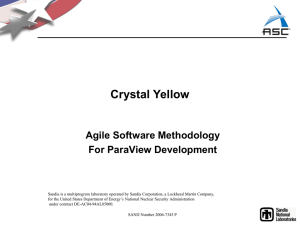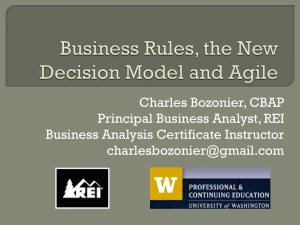Agile software process models
advertisement
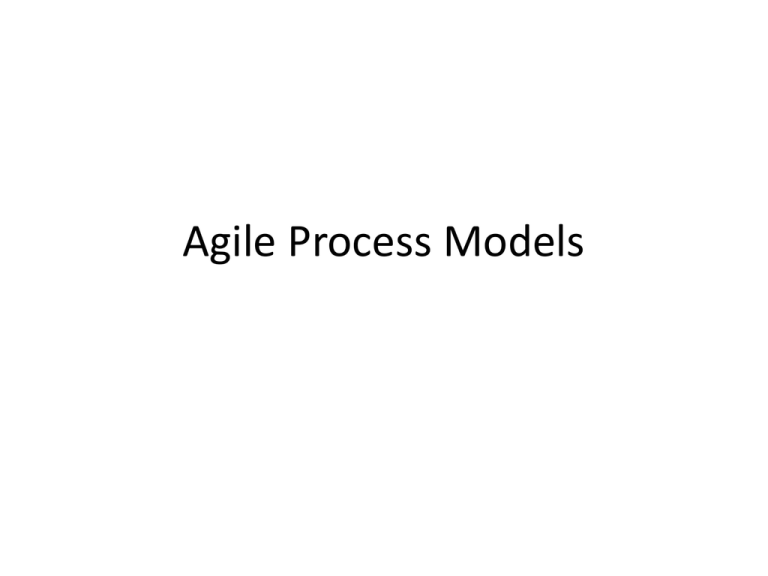
Agile Process Models Prescriptive models don’t work • It is unrealistic to not have changes. Why? • The Agile Manifesto: • Individuals and interactions over processes and tools • Working software over comprehensive documentation • Customer collaboration over contract negotiation • Responding to change over following a plan The Agile approach • Fix time and resources, not features Functionality FIXED Time Resources Agile Prescriptive Time Resources VARIABLE Functionality The Agile approach • Effective and rapid response to change • Effective communication among all stakeholders • On-site customer • Rapid, incremental delivery of software The Agile process • Driven by customer descriptions of what is desired • These are translated into short-lived plans • Development is iterative • Adapts as changes occur • Little to no documentation – Why bother documenting what is likely to change? – Customer is on-site Popular Agile Processes • eXtreme Programming • Scrum eXtreme Programming • Very programmer-focused; take the good practices and do only those! – Simplicity – Communication – Feedback – Courage XP practices: Planning • Begins with customer-defined user stories • Agile team assigns each story a cost • Stories are grouped into deliverable increments • Commitment is made on delivery date • After the first increment this project velocity is used to define future increments XP practices: planning game Split a Story (Customer) Write a Story (Customer) Sort stories by value (Customer) “too big” Estimate a story Declare velocity (Developer) (Developer) “don’t know how” Spike a Story (Developer) Exploration Planning XP practices: user stories • Watered-down version of use cases • Written by customers, estimated by developers • Often on post-it notes • Replaces large documents XP practices: on-site customer More XP practices • Small releases • Continuous integration – Implies refactoring • System metaphor • Sustainable pace – 40 hours max/week XP practices: Pair programming • • • • One developer writes, the other watches Switch every two hours Results in collective ownership Need a coding standard XP practices: Test Driven Development • Write automated unit tests first (will all fail) • Only write code until all tests pass – Stop there; no extra features! When not to use XP • Customer requires documentation • Teams larger than 15 people • When you can’t get immediate feedback (embedded systems) • When it’s impossible to get people in the same room Scrum • Sprints, backlog, daily scrum meeting Criticisms of Agile approaches • Lack of scalability • Relies on mature team • May result in inefficient designs due to incrementality • Potentially expensive – On-site customer – Rework – Inefficiency



